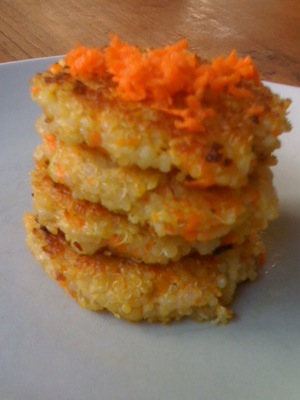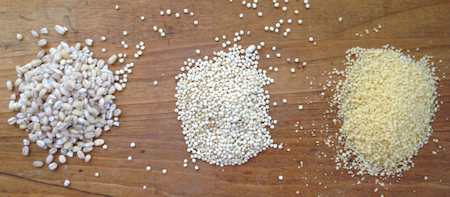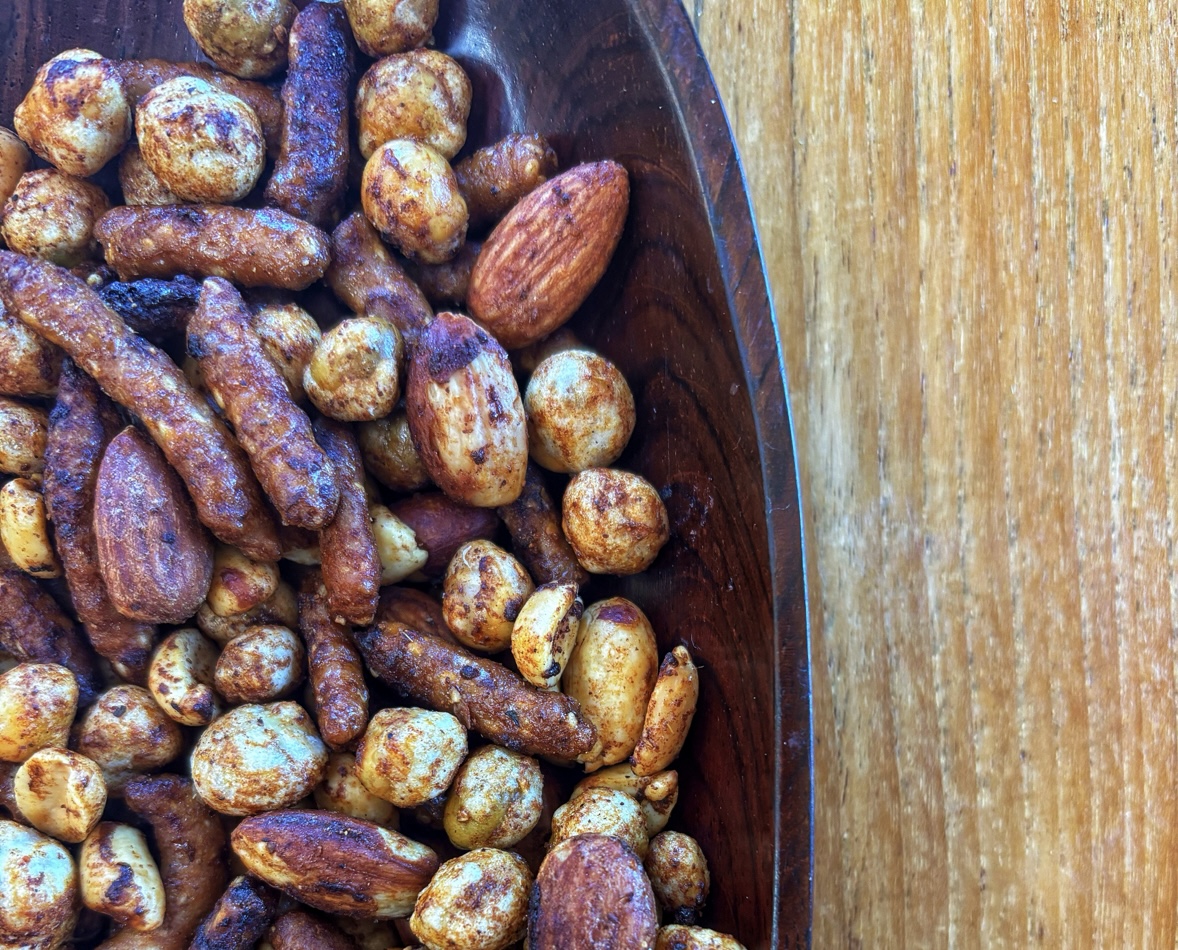Grains are an essential part of a healthy diet, and the benefits of eating whole grains are well documented. Studies have shown that people who eat three servings of whole grains daily reduce their risk of a variety of health problems including heart disease, stroke, Type II diabetes, digestive system cancers, and hormone-related cancers.
Even with all this great news about grains, the average American falls short on the American Heart Association’s recommendation to consume three servings of whole grains daily. Actually, Americans eats less than one serving a day, and one-third never even eat whole grains during the day.
We can talk about the nutritional value of different grains, how they are a good source of complex carbohydrates, vitamins and minerals (and, are low in fat). We can remind you that eating whole grains are better for you than refined grains (such as white rice and white flour), and by incorporating more into your diet, you’ll help reduce the risk of many diseases. But, as the statistics show, all that great news about grains is not getting us to eat more grains.
Perhaps the problem is that most of us just don’t know where to find them. We look on labels, but they can be confusing. As we walk the grocery aisles, we see foods that are labeled with the words “multi-grain,” “stone-ground,” “100% wheat,” “cracked wheat,” “seven-grain,” or “bran,” when actually they are usually not whole-grain products.
We’re used to buying packaged foods and while our intentions may be good, we fill our shopping cart with items we believe to be a good grain choice – white rice, pasta, seven-grain bread.
Reality is, these are made from refined grains, which have the bran and germ removed from the grain kernel – both of which are rich in nutrients, minerals and vitamins.
When shopping for whole grains in the store, theMyPyramid.gov site (from the center for Nutrition Policy and Promotion, an organization of the U.S. Department of Agriculture), suggests to choose foods that name one of the following whole-grain ingredients first on the label’s ingredient list: brown rice, bulgur, graham flour, oatmeal, whole-grain corn, whole oats, whole rye, whole wheat, wild rice.
Here are a few suggestions from the Mayo Clinic for enjoying more whole grains:
- Enjoy breakfasts that include high-fiber cereals, such as bran flakes, shredded wheat or oatmeal.
- Substitute whole-wheat toast or whole-grain bagels for plain bagels. Substitute low-fat bran muffins for pastries.
- Make sandwiches using whole-grain breads or rolls. Swap our white-flour tortillas with whole wheat versions.
- Replace white rice with kasha, brown rice, wild rice or bulgur.
- Feature wild rice or barley in soups, stews, casseroles and salads.
- Add whole grains, such as cooked brown rice or whole-grain breadcrumbs, to ground meat or poultry for extra body.
- Use rolled oats or crushed bran cereal in recipes instead of dry breadcrumbs.
Additionally, more and more products are using the Whole Grain Stamp introduced by the Whole Grains Council, a nonprofit consumer advocacy group working to increase consumption of whole grains for better health. Actually, there are two stamps, the 100% stamp, which denotes all the products grain ingredients are whole grains, and the Basic Stamp, which means that the product contains at least 8g (a half serving) or whole grain, but may also contain some refined grain.
Grains for Change
Aside from the healthful nature of grains, they can be a wonderful complement to any meal throughout the day. Expanding your use of different grains can help spruce up those same old recipes that you’ve been preparing and eating for ages. Whole grains add great texture and wonderful flavors – giving everyday meals a new look.
The switch isn’t too hard to make. It doesn’t’ take much to grab the brown rice instead of white rice at the store. Instead of fried potatoes with your burger, how about a nutty tasting bulgur salad with feta? For lunch, try barley and tomatoes.
All of a sudden, mealtime is given a whole new makeover.
Take the time to familiarize yourself with a variety of grains, including bulgur wheat, quinoa, rice, rye, oats, and barley, as well as lesser known grains such as spelt, millet, teff, buckwheat, amaranth, kamut, and flax. Here are some of our favorites, along with some recipes:
Spelt – also known as Farro in Italy and Dinkle in Germany, is one of the oldest cultivated grains. The grain is naturally high in fiber, and contains significantly more protein than wheat. Spelt is also higher in B complex vitamins, and both simple and complex carbohydrates. Another important benefit is that some gluten-sensitive people have been able to include spelt-based foods in their diets.
Bulgur – this quick-cooking form of whole wheat comes in different sizes and textures for a variety of food applications. Bulgur wheat has a pleasant, nut-like flavor and is ready to eat with minimal cooking. Bulgur can be used in recipes that call for rice of cous cous. It is best known when used in an ingredient in pilaf, soups, stuffing and casseroles. Ideal for a vegetarian diet and is often found in meatless burgers.
Amaranth – this highly nutritious grain was a staple of pre-Columbian Aztecs. It is extremely versatile and can be cooked as a cereal, popped, ground into flour, added to stir fry, soups and stews as a thickening agent.

Quinoa – very high in protein, quinoa is light, tasty and easy to digest. Unlike most other grains, quinoa is not sticky, making it a great substitute for any grain in almost any recipe. Ideal in casseroles, soups, stews, stir-fry, or cold in salads.
Barley – This wholesome nutty grain with a chewy texture is very popular for use in soups, but is versatile for use in salads, stews, side dishes even pancakes and waffles.
Recipes to try:
Bulgur Salad with Feta and Pine Nuts



